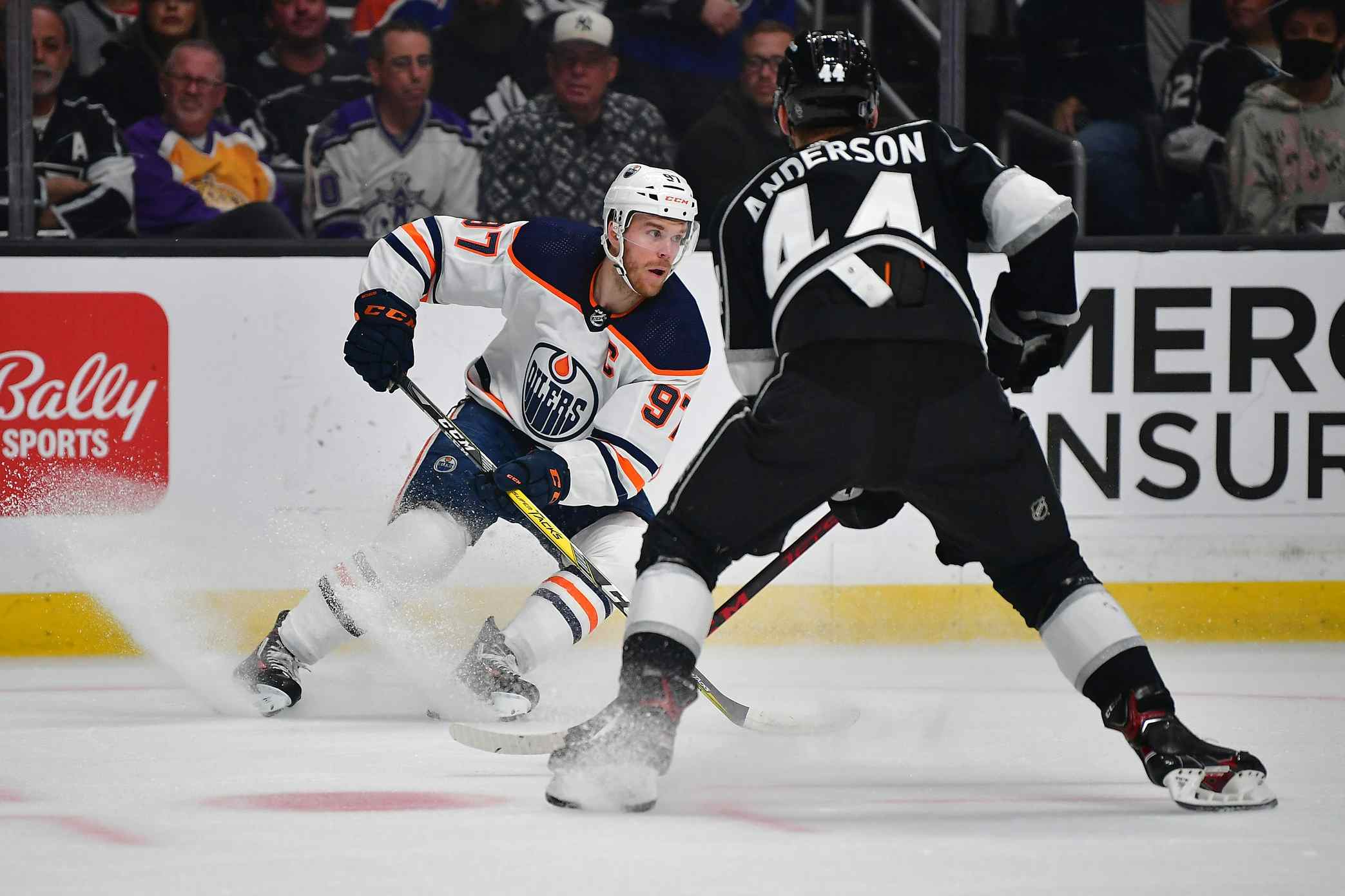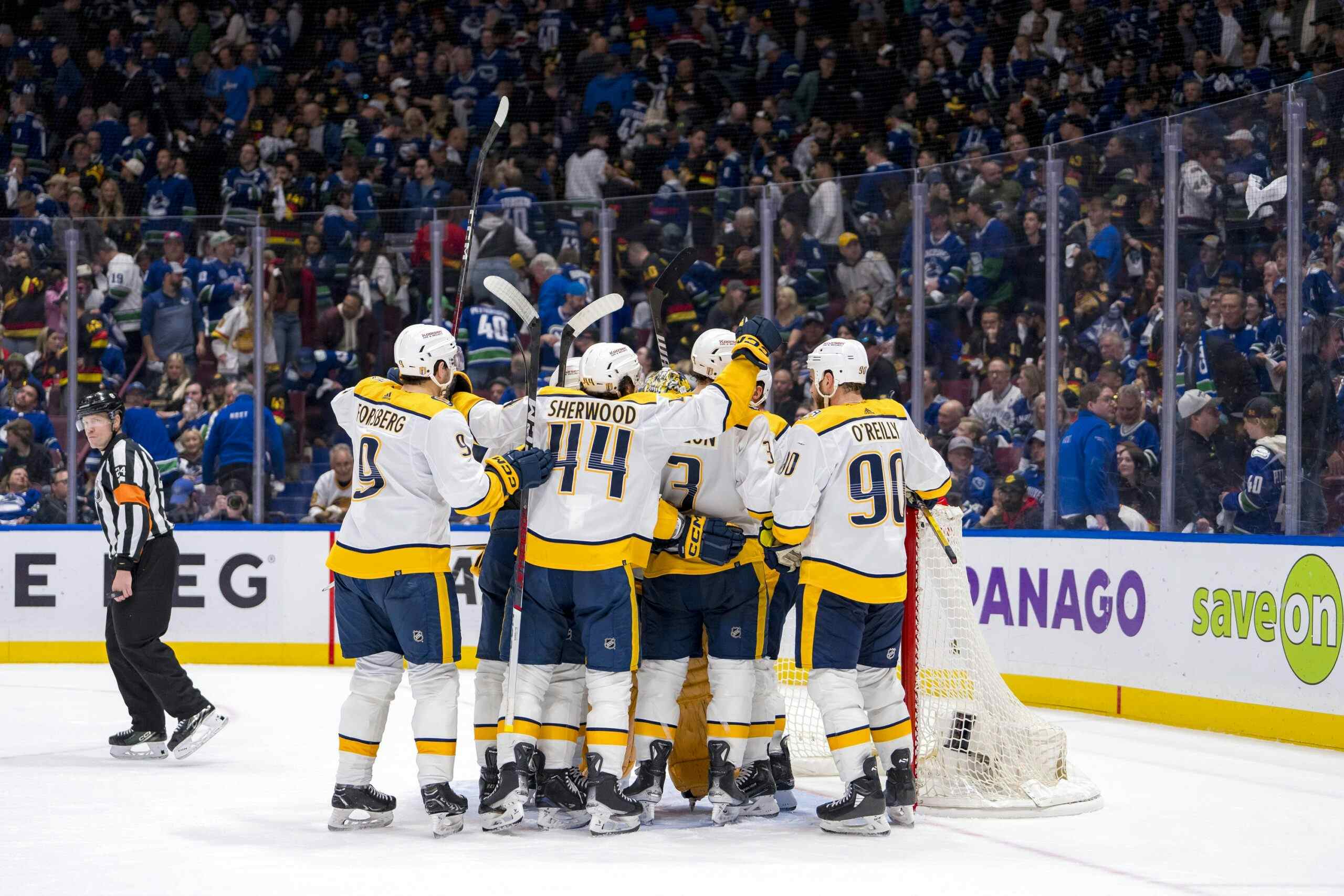Part of The Game
Two men stand facing each other, possibly with helmets off,
adrenaline coursing through their bodies. Gloves hit the ice. Arms reach out. Hands
grab onto something, anything. Fists fly for 30 seconds that feel like an eternity
before linesmen step in. The crowd cheers louder. The two men skate to the
penalty boxes after an obligatory pat on the back. Sticks are tapped along the
boards in front of both benches. The game continues on. This is fighting in the
NHL.
adrenaline coursing through their bodies. Gloves hit the ice. Arms reach out. Hands
grab onto something, anything. Fists fly for 30 seconds that feel like an eternity
before linesmen step in. The crowd cheers louder. The two men skate to the
penalty boxes after an obligatory pat on the back. Sticks are tapped along the
boards in front of both benches. The game continues on. This is fighting in the
NHL.
I’ll be honest here: I love a good fight. I do. I’m not sure
if I’m supposed to apologize for liking a good fight, but I’m not sorry that it’s
something I enjoy.
if I’m supposed to apologize for liking a good fight, but I’m not sorry that it’s
something I enjoy.
Now I’m going to admit to something even crazier: I think it
actually boosts momentum. Well, that is to say I believe players when they say
they feel boosts of momentum, because unless we’re talking about actually
pushing someone down a hill I don’t think we’re talking about Newton or physics.
There’s a very interesting cultural/taught/learned response to fighting in
hockey. If I ever wanted to do a PhD in Anthropology I would surely like to
spend time with hockey players as they learn not just how to fight, but how to
feel, think about, and respond to a fight.
actually boosts momentum. Well, that is to say I believe players when they say
they feel boosts of momentum, because unless we’re talking about actually
pushing someone down a hill I don’t think we’re talking about Newton or physics.
There’s a very interesting cultural/taught/learned response to fighting in
hockey. If I ever wanted to do a PhD in Anthropology I would surely like to
spend time with hockey players as they learn not just how to fight, but how to
feel, think about, and respond to a fight.
Fighting in hockey is not just about two men hitting each
other with fists. It’s about creating energy, policing the game, exacting
revenge, intimidating the opposition, and standing up for teammates. It’s
probably about a lot more than that but without those sweet university grants I’m
going to have to leave it to that list. And if that sounds stupid, like it’s a
bunch of hooey about a barbaric practice, then realize that we engage in a lot
of rituals in our daily lives that have greater meaning to us that an outsider
might think is ridiculous.
other with fists. It’s about creating energy, policing the game, exacting
revenge, intimidating the opposition, and standing up for teammates. It’s
probably about a lot more than that but without those sweet university grants I’m
going to have to leave it to that list. And if that sounds stupid, like it’s a
bunch of hooey about a barbaric practice, then realize that we engage in a lot
of rituals in our daily lives that have greater meaning to us that an outsider
might think is ridiculous.
Fighting doesn’t happen in hockey because the game is
inherently violent and sometimes meatheads just can’t control their emotions.
It happens in hockey because it is a part of the game and players have learned
when to fight. They’ve learned the rules of fighting that exist in hockey. We
have expectations about fighting even as fans. We understand when someone should
fight but won’t. We understand when someone fights but shouldn’t. And, unlike
in boxing, those rules aren’t necessarily based on weight class.
inherently violent and sometimes meatheads just can’t control their emotions.
It happens in hockey because it is a part of the game and players have learned
when to fight. They’ve learned the rules of fighting that exist in hockey. We
have expectations about fighting even as fans. We understand when someone should
fight but won’t. We understand when someone fights but shouldn’t. And, unlike
in boxing, those rules aren’t necessarily based on weight class.
Fighting is a part of hockey in a way that is unlike
fighting in any other sport. I recognize that this is not something that is
universally loved, but it is true nevertheless. I often hear, “Fighting isn’t
any more part of the game than spearing.” This is, of course, a lie. In fact,
the difference between the two can be seen pretty easily right within the
rulebook of the NHL.
fighting in any other sport. I recognize that this is not something that is
universally loved, but it is true nevertheless. I often hear, “Fighting isn’t
any more part of the game than spearing.” This is, of course, a lie. In fact,
the difference between the two can be seen pretty easily right within the
rulebook of the NHL.
Spearing is Rule 62 of the NHL. Like most infractions that
are covered in the book there are 6 clauses to Rule 62.
are covered in the book there are 6 clauses to Rule 62.
62.1 Is the definition of a Spear
62.2 Explains the case for assessing the lowest grade of
penalty (in this case a Double-Minor)
penalty (in this case a Double-Minor)
62.3 Explains the case for assessing a Major Penalty
62.4 Explains the case for assessing a Match Penalty
62.5 Explains the case for assessing a Game Misconduct
Penalty
Penalty
62.6 Explains the case for Fines and/or suspensions.
Pick an infraction and the rulebook works its way through
problems in this manner. High Sticking, Hooking, Elbowing, it all follows the
same pattern. Based on that pattern it is easy to conclude that any infraction
described in a similar manner is as equally illegal as another. The rules are
clear, straightforward, and well laid out. Rule 46 – Fighting – is not laid out
this way in the NHL’s rulebook. It does not follow this pattern.
problems in this manner. High Sticking, Hooking, Elbowing, it all follows the
same pattern. Based on that pattern it is easy to conclude that any infraction
described in a similar manner is as equally illegal as another. The rules are
clear, straightforward, and well laid out. Rule 46 – Fighting – is not laid out
this way in the NHL’s rulebook. It does not follow this pattern.
Rule 46 doesn’t have 6 clauses. It has 22! It actually spans
6 pages of the entire rulebook. This is not Spearing. This is not something
that is simply not “a part of the game”. The NBA rulebook covers fighting too.
It does it in 5 clauses, 4 of which explain that the fighting foul can be
called whether the ball is in play or not and what to do after the players are
ejected. That’s because it doesn’t take 6 pages and 22 clauses to describe
something that isn’t a part of the game, like fighting in Basketball.
6 pages of the entire rulebook. This is not Spearing. This is not something
that is simply not “a part of the game”. The NBA rulebook covers fighting too.
It does it in 5 clauses, 4 of which explain that the fighting foul can be
called whether the ball is in play or not and what to do after the players are
ejected. That’s because it doesn’t take 6 pages and 22 clauses to describe
something that isn’t a part of the game, like fighting in Basketball.
In Hockey, it takes 22 clauses to effectively cover the ins
and outs of fighting because even though players will be penalized for fighting,
there is a right kind of fight and wrong kind of fight. Because if one man is
acting the aggressor to an unwilling combatant it is wrong. Because if one
person is wearing a visor it is wrong. Because jumping in as the 3rd
man is wrong. Because not tying down your jersey then fighting is wrong.
and outs of fighting because even though players will be penalized for fighting,
there is a right kind of fight and wrong kind of fight. Because if one man is
acting the aggressor to an unwilling combatant it is wrong. Because if one
person is wearing a visor it is wrong. Because jumping in as the 3rd
man is wrong. Because not tying down your jersey then fighting is wrong.
All of these things are in the rulebook and the only
conclusion is that they exist in order to inform players about the RIGHT way to
fight in the NHL. If fighting wasn’t a part of the game then there would be no
need for these rules. The NHL rule for fighting would look a lot like the NBA
rule for fighting. Except it doesn’t.
conclusion is that they exist in order to inform players about the RIGHT way to
fight in the NHL. If fighting wasn’t a part of the game then there would be no
need for these rules. The NHL rule for fighting would look a lot like the NBA
rule for fighting. Except it doesn’t.
The “Golden Age” of fighting in the NHL is already gone.
Last year there were 344 fights in the NHL, the lowest in 15 years of data at
hockeyfights.com and surely much longer than that. It’s transitioning out of
the game, in part, because the roster spots that used to go to fighters are
being used on players who can actually skate. We are also increasingly becoming
more aware of what blows to the head can do to the brain and the long-term effects
that might leave behind. For the morally superior there might not be a place in
the future of Hockey for fighting.
Last year there were 344 fights in the NHL, the lowest in 15 years of data at
hockeyfights.com and surely much longer than that. It’s transitioning out of
the game, in part, because the roster spots that used to go to fighters are
being used on players who can actually skate. We are also increasingly becoming
more aware of what blows to the head can do to the brain and the long-term effects
that might leave behind. For the morally superior there might not be a place in
the future of Hockey for fighting.
Still, I’m not going to take the position that fighting doesn’t
belong in the game. What matters to me is that it IS a part of the game and has
been for my entire life even though it has been constantly evolving. Players learn the written and unwritten rules of
fighting. They know when to expect it, when to do it, when not to do it, how to
think about it, and how to react to it. Even as fights becoming increasingly
and dramatically less common, they remain a part of the game. I think they always will be even as the role of fighting continues to change over time.
belong in the game. What matters to me is that it IS a part of the game and has
been for my entire life even though it has been constantly evolving. Players learn the written and unwritten rules of
fighting. They know when to expect it, when to do it, when not to do it, how to
think about it, and how to react to it. Even as fights becoming increasingly
and dramatically less common, they remain a part of the game. I think they always will be even as the role of fighting continues to change over time.
Recent articles from Matt Henderson





